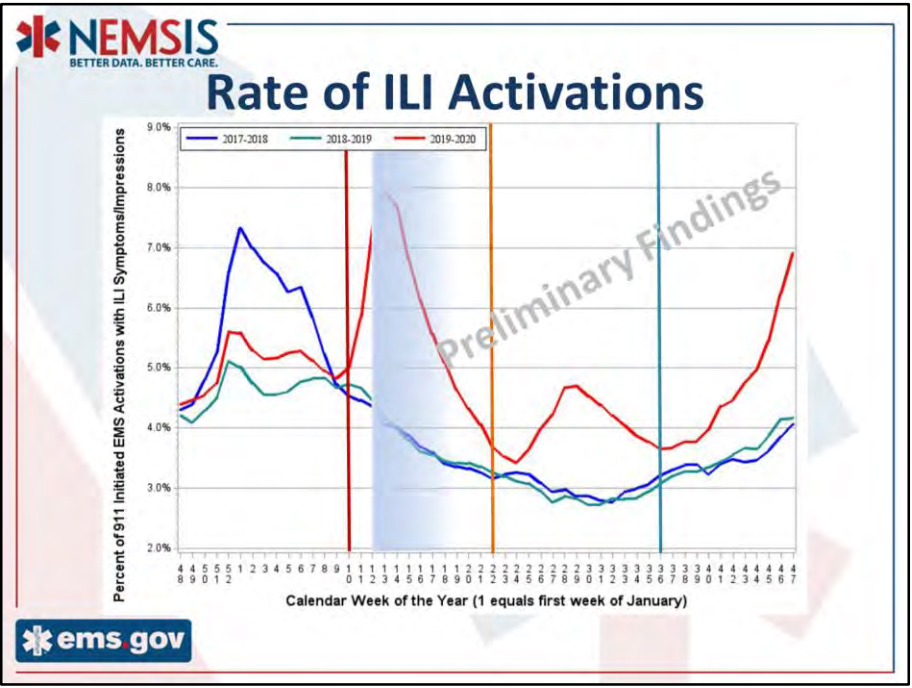EMS Data Helps in Response to COVID-19 Pandemic
National EMS Information System Technical Assistance Center and NHTSA providing national EMS data to pandemic planning teams, EMS stakeholders
Take a look at a graph of EMS activations for influenza-like illness (ILI), and you might mistake it for a chart displaying COVID-19 cases across the country. They track pretty similarly, with rates of EMS activations for ILI spiking in mid-March, again in June, and then steadily climbing since September.
The data, part of the “EMS By the Numbers” report published weekly by the analysts at the NEMSIS Technical Assistance Center, sheds light on the impact of COVID-19 on the nation’s health and on EMS systems. The most up-to-date reports are made available each week on the NEMSIS website.
In addition to following ILI activations, the reports show information on cardiac arrests, injuries, traffic crashes and opioid overdoses. The data is all taken from the National EMS Database, which is only made possible by the creation and growth of the National EMS Information System, known as NEMSIS. Because EMS clinicians in nearly 50 states and territories are submitting EMS patient care data to the database, these reports can paint an accurate picture of EMS responses across the nation. The list of potential uses of this information, from disease surveillance to policymaking to research, is vast.
“The data and trends contained in the charts certainly help us understand the effects of COVID-19 as seen through the eyes of the EMS responder,” wrote EMS expert Rob Lawrence in a column for EMS1.com about EMS data and decision-making. He went on to explain, “Your data joins a huge pot that can begin to answer questions on a national scale.”
The “EMS By the Numbers” reports have been used by officials involved in the federal pandemic response as well as national EMS stakeholders and state regulators. They also provide a guide for how local and regional EMS leaders can examine their own data, compare it to national and state information, and use it to talk to other local officials, share with public health authorities, or analyze it for planning purposes. Local agencies can see exactly which data fields are being used to create the reports, enabling to create their own identical versions with local data.
State and Federal Officials Use EMS Resource Reporting Tool Information
In addition to the information collected in patient care reports, other data from EMS organizations has been extremely helpful to officials at the state and local level during the COVID-19 response.
One is example is the EMS Resource Reporting Tool, created by NHTSA and the NEMSIS TAC to track PPE and personnel shortages. EMS organizations across the country have been submitting data weekly using the tool, which is available on NEMSIS.org.
In Montana, for example, the state’s EMS and Trauma Systems Program has used the tool to collect and report weekly information to the state’s emergency operations center. In addition, the office reaches out to agencies that have reported concerning shortages of protective equipment or EMS clinicians and coordinates with those local organizations to secure resources. About a quarter of Montana’s licensed EMS services have submitted data, and the state is regularly encouraging others to participate as well.
For more resources to help EMS organizations respond to the COVID-19 pandemic, visit the COVID-19 resource page on EMS.gov.

